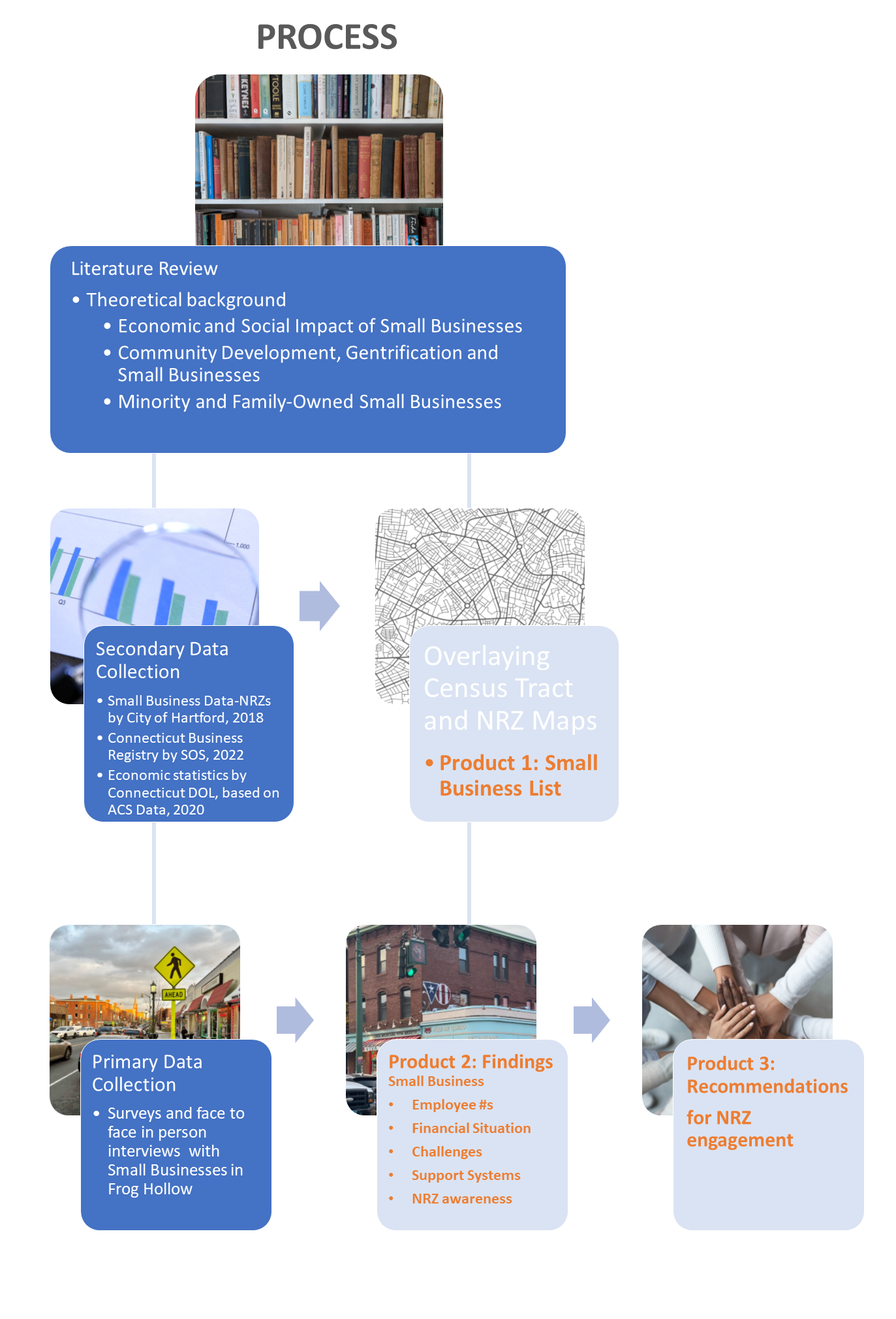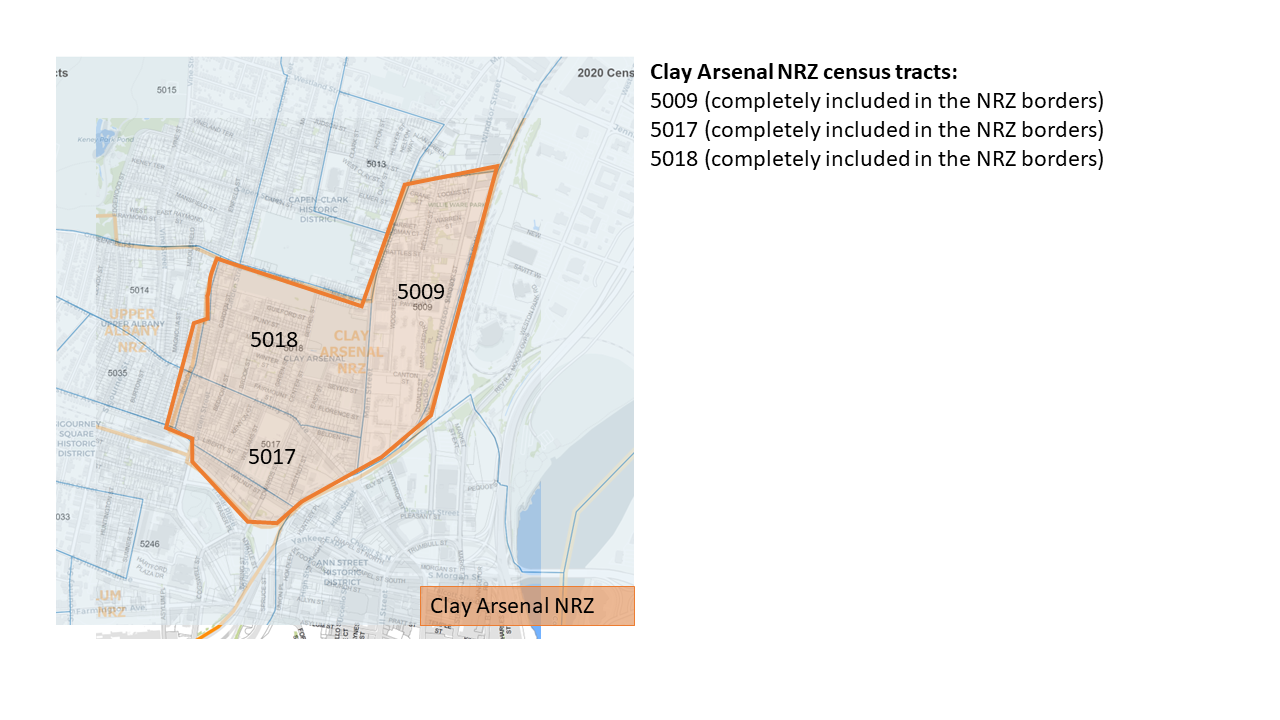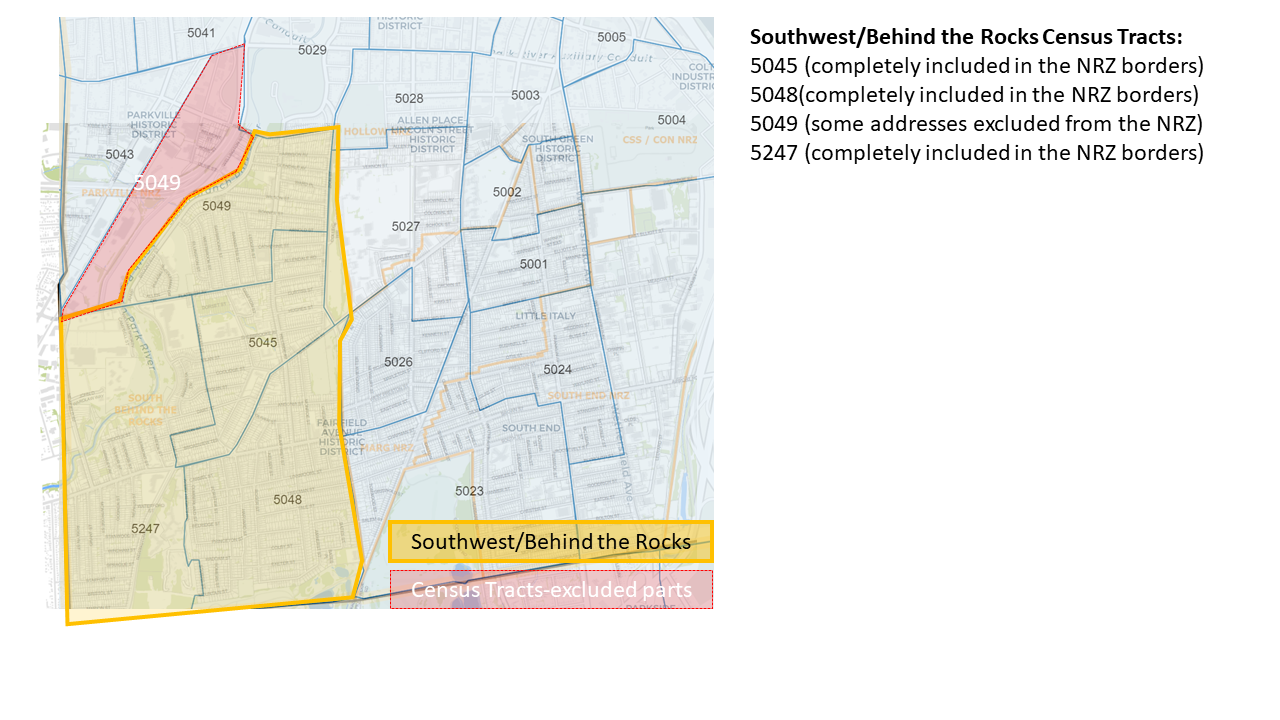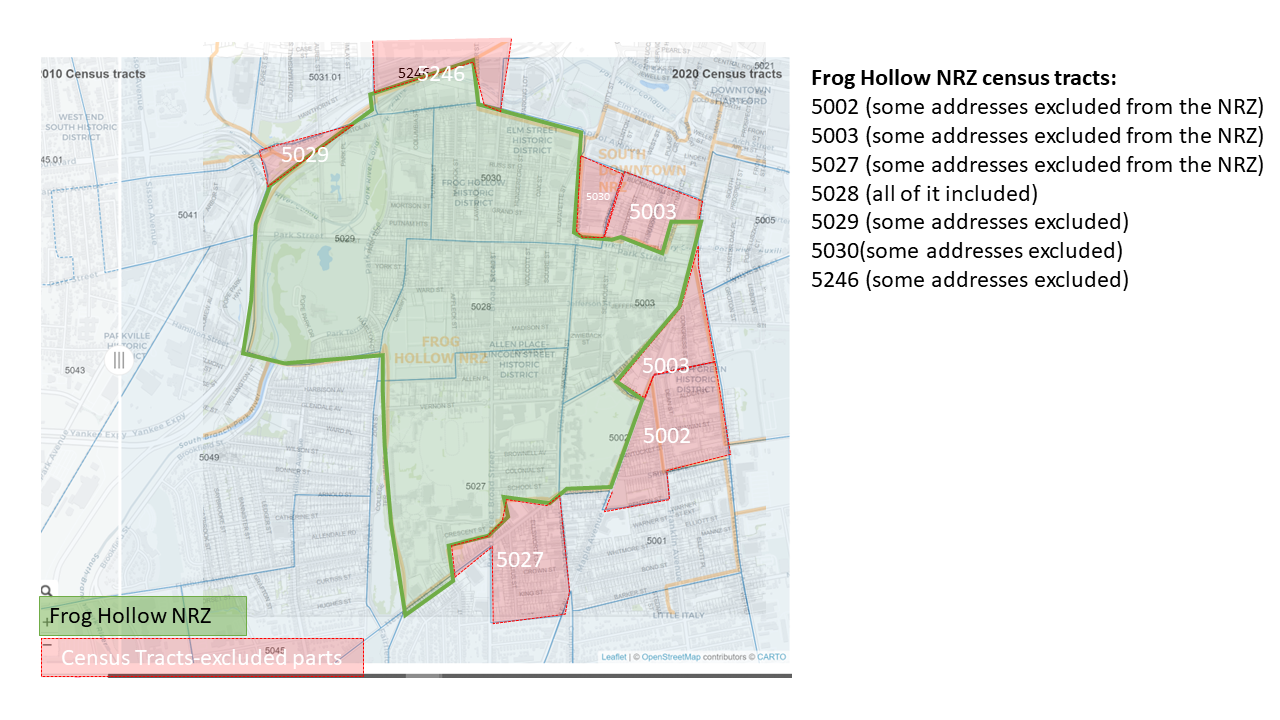We engaged with members of Hartford NEXT to understand their needs and wants based upon past history of Hartford NEXT, who and what is the history of Hartford NEXT and Hartford NRZs, what their current status is, and what they hope to accomplish with the partnership of LAAL.

Data Collection and Analysis Methods
Our community partner Hartford NEXT wanted to understand the economic impact of small businesses, their challenges, interaction and engagement with other organizations including their specific NRZs in Hartford. Both based on the literature and the discussions with Hartford NEXT, we decided that the number of employees and revenue information could provide us with a clear picture of the economic impact of businesses. To answer this question, first we reviewed publicly available secondary data across databases such as
- Small Business Data for NRZs by City of Hartford 2018,
- Connecticut Business Registry by Secretary of the State, October 2022
- Economic statistics by Connecticut Department of Labor, based on American Community Survey Data, 2020
We also reached out other organizations such as the City of Hartford-Department of Economic Development, Hartford Chamber of Commerce, Spanish American Merchants Association (SAMA) but our informational requests were inconclusive because we did not get response to our inquiries (see more about this on the “Limitations” section).
The CT Department of Labor – Economics Division was very helpful in providing information and guidance for publicly available data. Due to legal and contractual requirements, specific information on businesses in the NRZs was unavailable from the Department of Labor. Thus, we continued with primary data collection and we developed our survey (see the Survey Protocol here) and semi-structured interview protocols (see the interview protocol here) to include questions about employee numbers and revenues of businesses. However, in our email surveys and in-person interviews, only three (out of 15) business provided revenue information.
Although our community partner initially requested research about three NRZs, after consultation with Hartford NEXT, student and faculty, we chose Frog Hollow as pilot NRZ to conduct both survey email and in-person face to face semi-structured interviews to collect primary data due to resource limitations. To identify businesses in the Frog Hollow, Clay Arsenal, and Southwest/By the Rocks, the CT Secretary of State Business Registry (SOSBR) was utilized and overlaid with NRZ maps and Census Tracts (used for secondary data). From the SOSBR and map data, an email list was generated for surveys sent to businesses in Frog Hollow and identified small businesses on Park Street to conduct in-person interviews.
Map 1: Borders of NRZs overlaid with Census Tracts, Clay Arsenal NRZ

Map 2: Borders of NRZs overlaid with Census Tracts, Southwest/Behind the Rocks NRZ

Map 3: Borders of NRZs overlaid with Census Tracts, Frog Hollow NRZ

Our broader survey and interview themes revolved around topics such as
- the economic impact of small businesses,
- their financial, operational and location wise challenges,
- support systems, relations and interactions with organizations including the Frog Hollow NRZ
- and support expectations.
Such existence in the field also provided us with community outreach experience.
Although the email survey that was delivered through the online software program Qualtrics provided us with some information, due to low response rate (around 4%) the best experience came from the in-person interviews as part of community outreach. Using the list of businesses, we conducted an email survey based upon address in the Frog Hollow NRZ and sent out 217 surveys (list included 298 businesses but there were emails bounced back) (November 6, 2022) with 9 responses as of November 30, 2022 (4% response rate) through online survey system of Qualtrics. This was within our anticipated response rate of two to four percent, prior to sending of the email surveys. Following upon the survey process, we moved forward our data collection with in person semi-structured interviews.
Overall we conducted 14 semi structured interviews out of 24 small businesses we reached out to across Park Street in Frog Hollow. In-person interviews give the interviewer the opportunity to expand the availability of questions and a personable read of the interviewee, rather than a general email survey. As a team, we iteratively analyzed our data based on our broader research questions and what was emerging from the field and discussed our initial findings with our community partner Hartford NEXT. Through coding and developing themes, we summarized our findings to show the distribution of business types, discuss the challenges and support systems of small businesses and their awareness of NRZs to make further recommendations to strengthen the relation between businesses and NRZs.
Limitations
One of the challenges we faced while we were colleting publicly available secondary data was related to inconsistencies between the borders of statistical areas and NRZs. Although data sources such as ACS (5 year estimates) have available data down to census block geography, we identified cases where NRZs’ borders did not overlap with the geographical borders of these statistical areas (please see the Map). For instance, we used American Community Survey Data (5 year estimates) for some demographic and socio-economic statistics such as population, median household, and unemployment rates. While the statistics we obtained for Clay Arsenal and Southwest/Behind the Rocks census tracts reflect the overall situation in these NRZs (because borders of NRZs and census tracts overlapped), they should be read through these limitations for the Frog Hollow NRZ.
Another limitation was related to the confidentiality related issues about the secondary data. Based on our communication with the Connecticut Department of Labor, Research Office, Quarterly Census of Employment and Wages have data about the employee numbers of businesses however, they were not able to share this dataset due to confidentiality thresholds they have to maintain. Thus, we aimed overcoming this limitation through collection of primary data. We included a question about the employee numbers of business in our surveys that we delivered to 298 small businesses in Frog Hollow (217 reached to the businesses, response rate ~4%) and in our interviews we conducted with 14 businesses. However, due to small sample size, we can not make statistical generalizations from our findings. A similar limitation was observed for the revenue information. During our face to face to interviews, businesses retained from answering questions about their financial situations.
We used publicly available City of Hartford data about the small businesses (includes information about the business type and address see the data sets in the Appendices) for NRZs but this dataset belongs to 2018 and not updated. Another issue was about the business classifications. Classification types such as car shops, jewelry store, electronic repair and so on do not match with broader North American Industry Classification System (NAICS). This situation kept us from providing a healthy comparison between 2018 and 2022 data for small businesses. A codebook aligned with NAICS about these classification would be helpful overcoming this issue.
